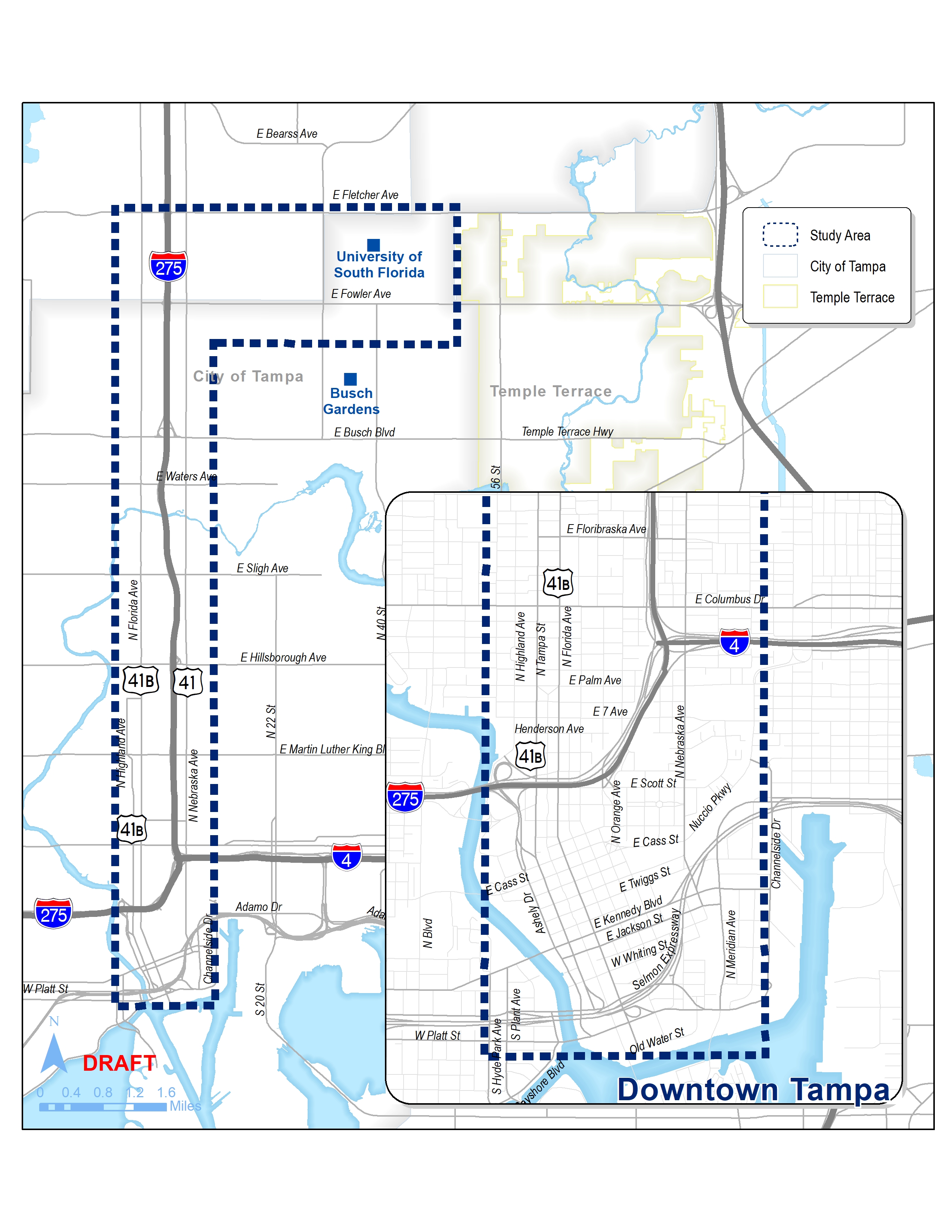USF-to-downtown bus rapid transit in the works

SPECIAL TO THE ORACLE
Students may be open to traveling on a new set of wheels in the future as the USF community and surrounding areas will have a faster way to travel to Downtown Tampa.
With the plan on providing a faster mode of transportation between Downtown Tampa and the USF area, the Hillsborough Area Regional Transit Authority (HART) is conducting a study to create a Bus Rapid Transit (BRT) line to avoid congestion between both regions while focusing on the existing corridors along Florida Avenue and Nebraska Avenue to Fowler Avenue.
The $2.5 million Tampa Arterial BRT Study is currently examining the potential to operate a transit service, which is slated to be Bus Rapid Transit or rubber tire transit, in an exclusive guideway, separating buses from other traffic, and with full Transit Signal Priority (TSP) for most of the corridor between Downtown Tampa and USF.
The total cost for the project has not been announced yet, but it is expected to be released in the spring.
The cost to ride will be free for USF students. For regular riders, the fare will be $2 one-way trip or $4 unlimited throughout the day.
According to Willits, there will be 20 stations along the transit line, anywhere from a half-mile to a mile distance. The exact locations of each bus stop have not been decided yet.
While it will be a faster trip from end to end in approximately 30 minutes, the real benefits come from traveling from the middle of the route to one and/or the other, Willits said.
The study was developed after local politicians and advocates wanted something on the street level that would benefit the neighborhoods more and not be part of the interstate system, senior planner and Deputy Project Manager Justin Willits said.
While the study centers on the corridors, other parts of the study focus on how the intersecting transit bus routes connect to this service and how bicyclists and pedestrians can access the service.
“We’re hoping for an actual service that will feel safe getting to and from their destination and also improve it for the existing passengers along the corridor, which is part of this general enhancement of the transit line itself and getting it out of mixed traffic,” Willits said.
“We know that in certain sections, likely we’ll have to operate in mixed traffic, but we’re trying to minimize that and the impacts to traffic that would naturally occur by us.”
A location for the bus station in the USF area hasn’t been selected yet, but it will probably be located in the vicinity of the James A. Haley Veteran’s Hospital where the pedestrian bridge crosses Bruce B. Downs, according to Willits.
Willits said there are USF stakeholders on HART’s Stakeholder Advisory Committee but they are not currently contributing to the study or project.
“We may try to explore a station on the USF campus, but we have not started those conversations yet,” Willits said. “We just know that we want to end in the vicinity of the James A. Haley Veteran’s Hospital, but the potential for a USF station at the end of the line is not off the table, but we’re considering it with a number of options.”
The study will be completed late this year or early next year.
According to Willits, the preliminary alignment was presented to HART’s board of directors, following the Metropolitan Planning Organization (MPO) and its appropriate committees.
The structure of the project will vary depending on HART’s staff recommendation and the direction of HART’s board of directors decide to take, which will be decided later in the spring.
The decision lies in either advancing the project to a federal level or creating small projects focusing on intersection improvements, station enhancements and connectivity benefits.
“It’s gonna be a faster trip from end to end, but it’s a much better trip for those people that live along the route and in the middle,” Willits said. “It also gives us a chance to redevelop these corridors, in a way that doesn’t add a large number of automobile trips, because we provided an alternative mode of transportation that is competitive with the travel time of an automobile.”
While the project aims to provide a faster transportation option, Willits said that they hope to grow both regions economically as well.
“We know that investment across the world, particularly in this country flows towards cities that have viable mass transit options where people aren’t forced to drive to go to most of the places that they want to get,” Willits said. “So it’s assumed that it’s better for the local and regional economy to have mass transit, as part of your transportation options.”







